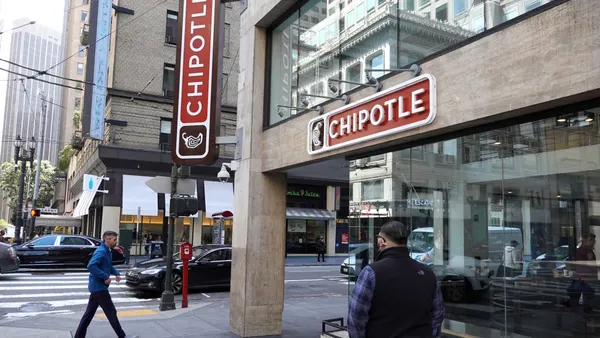A staggering 96% of QSR locations now receive online reviews — a huge increase compared to just 27% in 2015, according to Yext research.
Why? The proliferation of reviews sites is part of it: Not long ago, Yelp and TripAdvisor were the main platforms consumers turned to when leaving reviews for local businesses, but now platforms like Google, Facebook and more are giving customers a place to share their opinions. In the social media age, everyone’s a critic.
And while historically, hospitality received the most reviews, QSRs have now matched hospitality with 96% of locations having at least one review on a local listing. Casual and fine dining restaurant brands are just behind, and they are now the third most reviewed industry, with 94% of locations having at least one review associated with a local listing on Google, Facebook, TripAdvisor or Yelp. This rapid increase in location-level reviews is also strongly correlated to Google’s global investment in the space.
Here’s how the review distributions breaks down for QSRs across platforms:
Across top three QSRs with over 3,000 locations:
- 87% of reviews came from Google
- 8% from Facebook
- 5% from Yelp, TripAdvisor and other review sites
In 2011, Michael Luca at Harvard Business School completed a study showing that a rating increase of one star on Yelp correlated to a 5–9% increase in revenue per location. And with Google’s algorithm now including review ratings and review quantities as ranking signals, businesses can now see a direct correlation between increased star rating and click-through rate (CTR) on key customer actions like “Get Directions” or “Order Online.”
How a small change in star rating makes a big difference
Across all verticals, businesses with 4–5 star average ratings see higher positions within the local map pack on Google. In an internal study, Yext also found that locations with 4–5 star average ratings, and at least 50 reviews, see a +.5% CTR for “Get Directions” when compared to those with an average rating of just 2–3 stars. Such locations with more than 100 reviews see a +.8% CTR for “Get Directions,” and those with more than 500 reviews see +1% increase in CTR for “Get Directions” (clicks for directions are deemed the highest conversion metric for in-person visits to restaurant brands). Similar trends correlate to click-through rate to websites. Yext found that businesses with 500+ locations and a 4–5 star average rating see almost +2% CTR from Google search results than businesses with 2–3 star average ratings.
The actual language used in a review can also have a positive impact on unbranded search queries like “ice cream near me” or “restaurants with coffee open now.” Fazoli’s, a Yext client since 2016, saw a 43% increase in the share of local search results for the word “pasta” within six months of implementing a reviews management program.
Many QSRs — and fine and casual dining restaurant brands — operating on razor-thin margins often struggle to effectively fund programs that address this massive industry shift in the way reviews impact search, discovery and purchase. But as customer reviews become more prevalent in these industries — and directly influential on foot traffic — the time to get a solid reviews strategy in place is now.
Learn more about the impact of reputation management with our whitepaper, How to Win Digital and Real-World Business with Local Reviews










